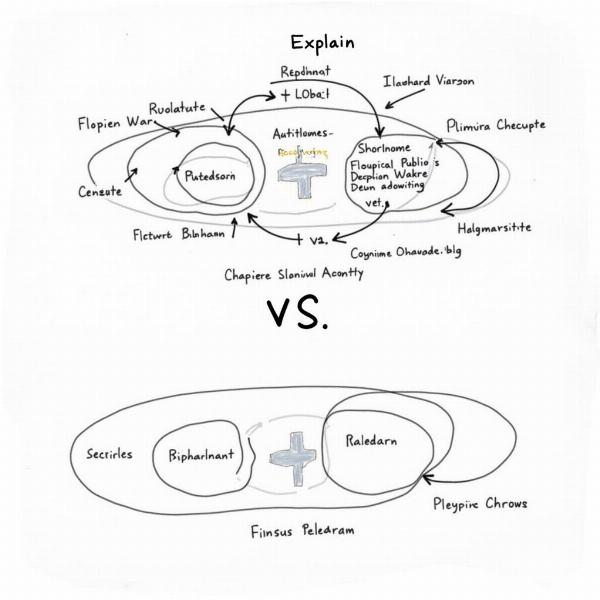Understanding the meaning of “adumbrate” can be tricky, especially when trying to find its Hindi equivalent. It’s a word not often used in everyday conversation, but knowing its nuances can enrich your vocabulary and understanding of English texts. This article explores the different facets of “adumbrate,” offering various Hindi translations and real-world examples to solidify your comprehension. We’ll also delve into the common situations where you might encounter this word and how to use it effectively.
Unveiling the Meaning of Adumbrate
“Adumbrate” means to represent in outline or to vaguely foreshadow or suggest something. It implies giving a general idea or a hint without going into specific details. Think of it like sketching the basic form of a drawing before adding the intricate details. It’s about giving a glimpse of what’s to come or hinting at a hidden meaning.
In Hindi, several words capture the essence of “adumbrate,” depending on the specific context:
- संकेत करना (Sanket karna): This translates to “to hint” or “to indicate.” It’s perhaps the most common and versatile translation.
- रूपरेखा देना (Rooprekha dena): This means “to outline” or “to give a sketch.” It’s particularly apt when “adumbrate” is used in the context of giving a preliminary plan.
- आभास देना (Abhaas dena): This translates to “to give an impression” or “to suggest.” It’s suitable when “adumbrate” refers to hinting at something indirectly.
- झलक दिखाना (Jhalak dikhana): Meaning “to show a glimpse,” this translation emphasizes the partial and suggestive nature of “adumbrate.”
Using Adumbrate in Different Contexts
The word “adumbrate” appears in various contexts, from literature to academic discussions. Understanding its usage in these different scenarios can enhance your comprehension and communication skills.
Adumbrate in Literature
Authors often use “adumbrate” to foreshadow events or create a sense of mystery. For example, an author might write, “The dark clouds adumbrated the impending storm.” Here, the dark clouds are a hint or a suggestion of the approaching storm.
Adumbrate in Academic Writing
In academic writing, “adumbrate” can be used to present a brief overview of a complex topic before delving into the specifics. For example, a researcher might “adumbrate the main arguments of their paper” in the introduction.
Adumbrate in Everyday Conversation
While less common in everyday conversation, you might hear someone say, “The director adumbrated his plans for the next film.” This suggests that the director gave a general idea of his plans without revealing all the details.
Adumbrate: Answering Your Questions
What’s the difference between adumbrate and explain?
While both involve conveying information, “explain” implies giving a full and detailed account, whereas “adumbrate” only provides a general idea or outline.
Can adumbrate be used in a negative context?
Yes, “adumbrate” can suggest a lack of clarity or detail. For instance, “The witness’s testimony only adumbrated the events of that night” implies that the testimony wasn’t comprehensive.
Conclusion
“Adumbrate” offers a nuanced way to express hinting, suggesting, or outlining, and knowing its Hindi equivalents allows for a richer understanding of the word’s implications. By exploring its diverse applications and understanding its subtle differences from similar terms, you can confidently use “adumbrate” to enhance your communication and comprehension.
FAQ
- What is the closest Hindi translation of adumbrate? संकेत करना (Sanket karna) is often the closest and most versatile translation.
- Can you give an example of adumbrate in a sentence? The artist adumbrated the figure with charcoal before adding details.
- Is adumbrate a commonly used word? No, it’s more prevalent in formal writing and literature than in casual conversation.
- What’s the difference between adumbrate and foreshadow? While both hint at future events, “foreshadow” is more direct and often used in storytelling, whereas “adumbrate” is broader and can refer to outlining or hinting at any concept.
- Is adumbrate a positive or negative word? It can be both depending on the context. It can be positive when used to create suspense or intrigue, but negative when suggesting a lack of clarity.
 Adumbrate vs. Explain: Clarity of Information
Adumbrate vs. Explain: Clarity of Information
Meaning-Hindi.in offers professional translation services in a variety of fields, including business, legal, technical, website localization, education, and specialized areas. We provide fast and accurate translations that cater to your specific needs. Whether you require translation of business documents or educational materials, our expert team ensures quality and cultural sensitivity. Contact us today for a free quote! Email: [email protected], Phone: +91 11-4502-7584. Meaning-Hindi.in is your trusted partner for all your Hindi translation needs.